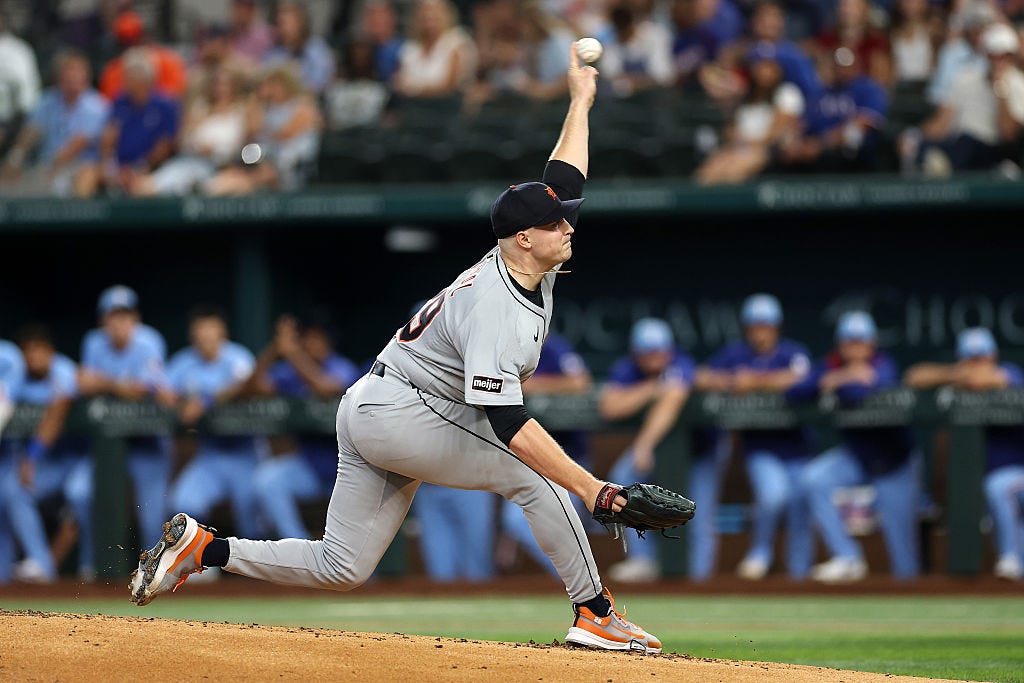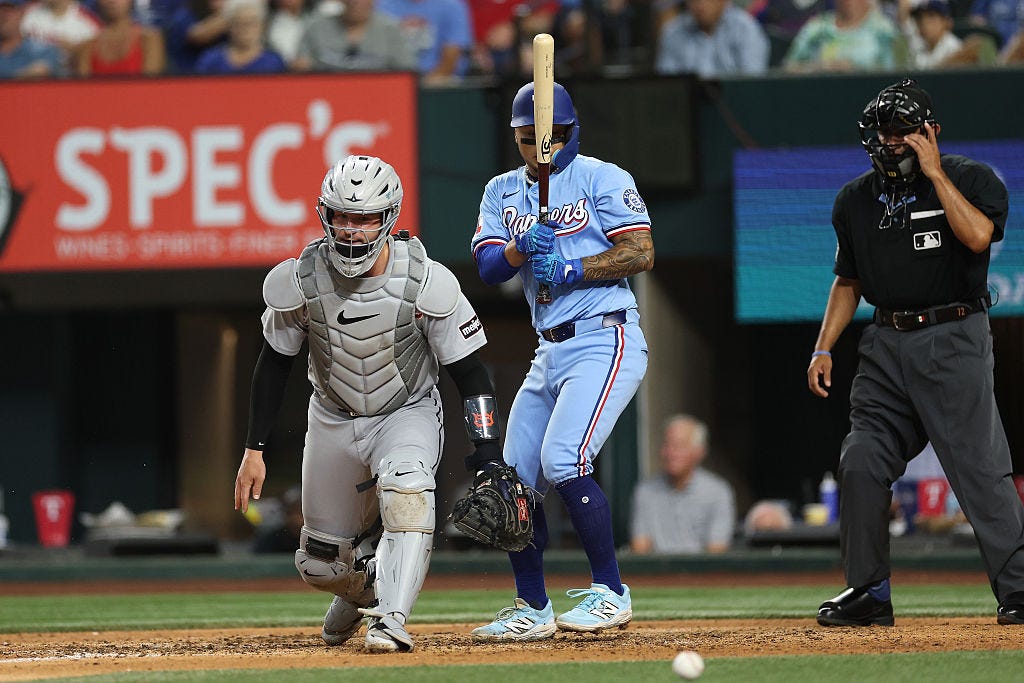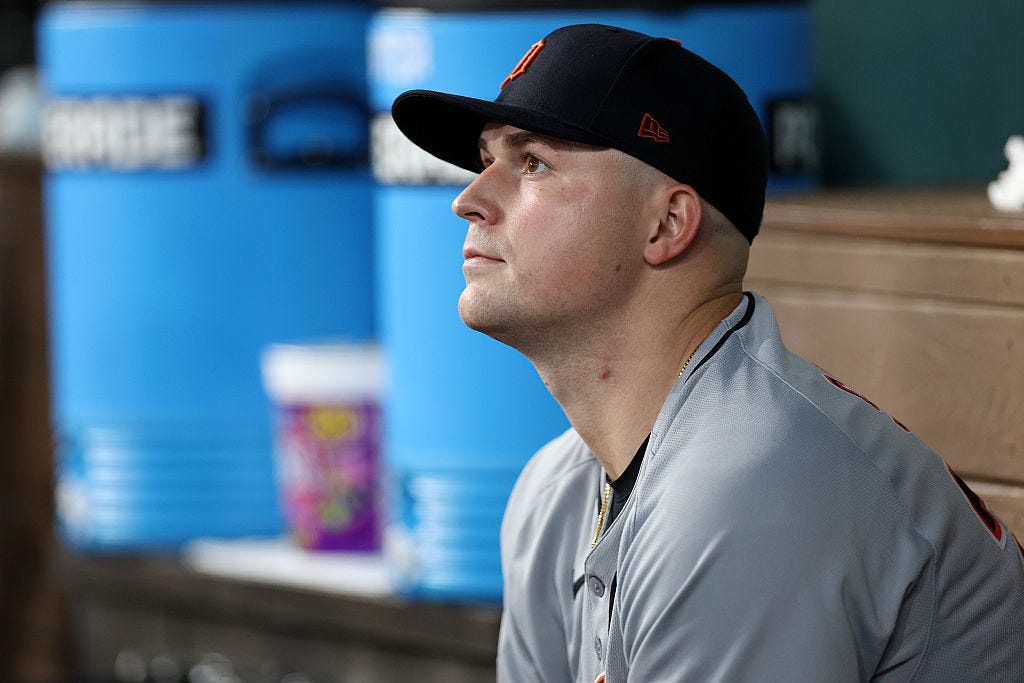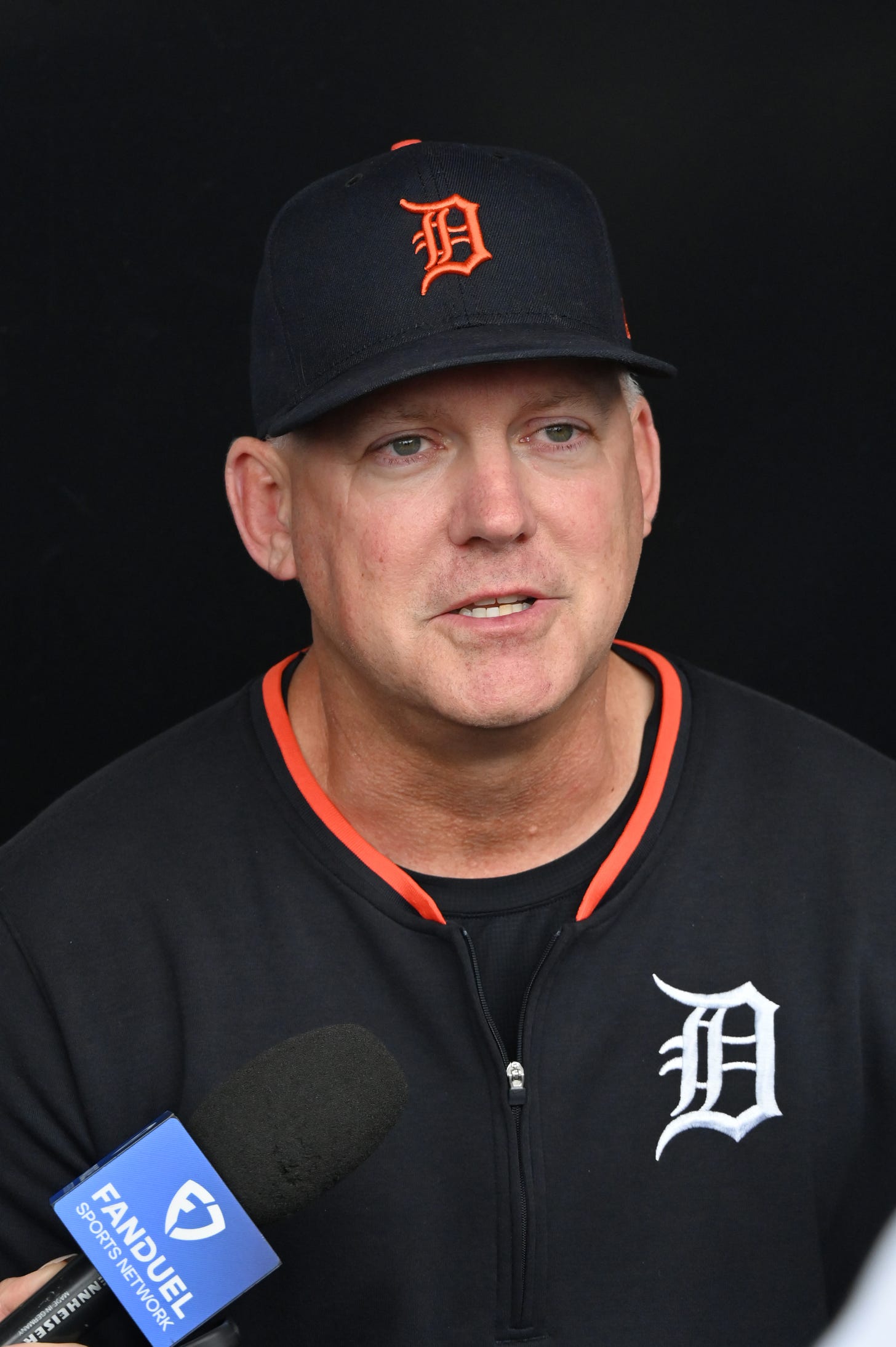Pulling An Ace
The Art of Making Better Decisions, Not Perfect Ones in a Game of Second-Guessing

The Tigers were mired in a six-game losing streak.
They were on the road in Arlington, TX.
It was the bottom of the 7th with runners on first and third.
They were winning 1-0.
Their ace, Tarik Skubal, was on the mound, arguably the best pitcher in baseball.
He already had 11 strikeouts.
No walks.
And still throwing 99 miles per hour.
He was at 105 pitches, the most he had thrown in a single game since 2022.
Then, his manager, A.J. Hinch walked out to the mound. After a very brief exchange, he signaled to the bullpen for another lefty: Tyler Holton.
On Holton’s first pitch, the runner steals second. Now it is second and third.
On Holton’s third pitch, he bounced a curveball that his catcher barely blocked, narrowly avoiding a wild pitch that could have allowed the tying run to score from third.

On his fourth pitch, another bounced curveball. This time, his catcher did not block it.
The tying run scored.
The camera zoomed in on Skubal.

As an analyst, these are the big moments I am supposed to dissect. My job is to answer the why and the how of baseball’s moments, to add color to the picture. And on radio, that matters even more. Although not a requirement, a good part of what I rely on to do this job is having played the game at the highest level. I have been that baserunner on third. I have been on teams where the manager wrestled with pulling his ace, guys like Mark Prior or Curt Schilling. I have been in center field when a wild pitch from a teammate may have cost us the game. Or in the batter’s box when an opposing pitcher did the same, to our advantage.
Seeing the moment from all these angles makes my job harder. I understand the ripple effect that decision-making and mistake-making can have on an outcome. It’s personal. I have been there. I can feel myself teleported back in time.
And now, in the booth, I have to ask the question out loud:
Why did the Tigers take out Skubal in that situation?
The “could haves” start to flood in.
He could have faced one more batter.
A batter I had met just hours earlier, Cody Freeman.
Just 48 hours before, Freeman had unknowingly declined a few phone calls from his Triple-A manager while sitting at a blackjack table with his father in Las Vegas before a Triple-A Round Rock’s series with the Las Vegas Aviators. Freeman eventually received a text message, followed by another call, and then came the mad dash to the airport for a flight to Dallas-Fort Worth to meet his new team, the Texas Rangers in Arlington, Texas.
I happened to be on the field before Freeman’s first major league start against the Tigers during batting practice when his group was hitting. I congratulated him on the call-up and mentioned the winning run he scored as pinch runner during his debut game two days earlier. He responded with “yes sir” and “no sir” between stories, polite and surprisingly relaxed.
I was mindful that, as a rookie, he would not want to be chatting too long while the hitting coach peered at him through the netting, especially one like Bret Boone who is part of a three-generation MLB family.
I kept thinking about my rookie season. Everything is fast and blurry. And for Freeman, it was about to get even blurrier. He was facing the reigning American League Cy Young award winner in his first major league at-bat. A pitcher aiming for another trophy in 2025.
Freeman’s first two at-bats?
Skubal overpowered him on the first one for Freeman’s first MLB strikeout.
Then Skubal got him to fly out to right in the second.
That is all the major league data the Tigers had on Freeman. A strong minor league season and two big league plate appearances.
Then came Holton, also a lefty, to face Freeman. Not a right-hander, which we have come to expect as a match-up against a righty like Freeman.
Question: Is Holton a better lefty than Skubal in this situation, even a fatigued Skubal at 80%?
Question: Was Skubal simply gassed?
I played in a different era. But referencing that era does not always make for good analysis. Pitching today is managed differently. Some of it is tactical. Some of it is cultural.
I played alongside plenty of aces like Skubal, and back then, few managers would have pulled a pitcher like him mid-inning during a high-leverage situation against a rookie, regardless of pitch count. In fact, I played with Hinch, who, now as a manager, took Skubal out of the game. As a former catcher, Hinch understands the pitching strategies of that era as well as anyone. There was a time when removing your ace in that moment could be summed up in three words:
Not a chance.
But that is no longer how the game is played.
Today’s managers consider pitch counts, mound presence, body language, fatigue signals, and worst-case scenarios, like injuries that could sideline a guy for months. It may not be worth risking your ace for one out. Especially if another pitcher can get that out, even if not as easily.
Skubal was probably the best pitcher for that moment, even at 105 pitches. The best lefty. But what did we not know?
Despite the shock of the tying run scoring without a swing of the bat, the Tigers later added another run and held on for a 2-1 win. Closer Will Vest shut the door.
Does winning erase some of the questions? For sure. But when the best pitcher in the game is taken out in a defining moment, questions will come.
Baseball is built on second-guessing.
It is a game of what-ifs.

“Those are tough decisions,” Hinch said. “As I told him on the mound, if we’re going anywhere, we’re going with him. I wanted to give him the Heim at-bat, maybe even the at-bat behind him. But the Heim at-bat, he emptied his tank…..it was just time to go get him there.” (Dave Sessions, “Skubal tallies 11 K's as Tigers become first team to 60 wins,” MLB.com)
Managers, coaches, and players must make head-spinning decisions, in real time. Hitters with milliseconds to decide to swing or not, making calculations before the ball even leaves the pitcher’s hand. Pitchers in conversation with catchers through devices or mound visits, talking through the next pitch, under the pressure of the pitch clock. And fielders anticipating how the play will unfold, adjusting to be in the right spot. Then, after each pitch: reset. A new set of data. Updated instincts.
Players second-guess themselves constantly.
Why didn’t I look for the curveball?
Should I steal this base now?
Which pitch should I throw?
Should I have thrown to that base?
Meanwhile, the coaching staff is also running scenarios, flashing signs, calling plays, and sometimes overriding your instincts with theirs. And, teammates are voicing their thoughts too which can seep into your decision-making. You start second-guessing them while you are second-guessing yourself. Throwing a fastball when I wanted the slider. Giving me the stop sign when I thought I could make it. Yelling “I got it!” when I was sure it was mine.
Do I shake him off?
Baseball has a natural do-over button. You can change a decision the next time. You review it in your head, or even on video, because you know there will be another opportunity to be better.
The same plays come around again. This inning, next inning, next game, next series. Not just for your team, but across the league.
The decision tree?
It is more like a forest.
The scenarios may look familiar, but every branch holds a nuance.
It gives the illusion that the best decision should stand out. Obvious, like a bright star on top of a tree.
But it is happening in real time, lightning fast, with shifting winds. Experience slows it down, but never completely stops it. You have to decide while in motion.
You adapt to its changing seasons. You bring your umbrella or your sunscreen, but the elements always win at some point. You are still at the mercy of your reflexes and your in-game reads. Sometimes, decisions are made without the benefit of deep thought despite having preloaded data. You simply do not have enough time.
Now, with technology, we can rewind. Pause. Analyze in super slow-mo. It helps. It teaches. But reality does not move in slow motion when you are back in the batter’s box, and Skubal is throwing 100 miles per hour in 100 degree heat. Right at you.
In baseball, there are not always right decisions. Just better ones.
Better odds, often revealed only in hindsight.
Lesser evils. Greater goods.
You are chasing fractions and percentiles, not absolutes.
You chase those better decisions. The one-to-grow-ons. You aim for perfection, knowing it is impossible, but worth the pursuit for the slightest edge.
And so does your opponent.
A.J. Hinch is one of the brightest minds in the game. He sees the game in layers, anticipates, weighs options, and understands how connections with his players help him lead under pressure.
The Tigers won that night.
Had Holton struck Freeman out on three pitches, the questions might have sounded more like an endorsement rather than an indictment.
Had the Tigers lost, the second-guessing would have been relentless. Until the next game.
If you want to survive in this game, you cannot let second-guessing rule you. It is woven into the game. Could have, should have, might have.
There is the internal dialogue that you have to manage so it does not eat you alive. But there is also the external noise. Fans, coaches, managers, administrators, teammates, media, family, friends. Everyone has questions.
It is part of being a follower of the game, too. The what-if moments that give us a false sense of control.
Why didn’t he swing at that?
Despite the ego it takes to compete at the highest level, baseball demands humility. The ability to accept that you cannot control outcomes. Especially not as an observer.
I am one now. Watching from the booth. Informed. Experienced. But still just an observer, powerless over how the game unfolds once the first pitch is thrown.
So I remind myself, and the audience, that this game is really, really hard. Still, I have to ask the tough questions. Fair ones. To understand, to learn, to inform, and also to challenge.
Because in the booth, it is always easier. No sore hamstrings. A bird’s-eye view. A laptop open. And the replay rolling in slow motion.
That night, the Tigers were 1-6 in their last seven. Not anything to celebrate. But they have reached 60 wins, the first team in Major League Baseball to do so this season.
Clearly, they have made a lot of good decisions. But I am sure they are still second-guessing themselves:
Could we have won 61?
What is a game decision you have second-guessed? Share it in the comments.





AJ Hunch 😎
As always, Doug, such fine work. As always, you clarify the complexity without simplifying it. You add something special to our awareness of this sport. Thank you!